I first came across this beautiful street while a tube strike was in progress – disruption to my usual route to work meant that I had travelled on a National Rail service into Waterloo, and had then covered the rest of my journey to work on foot. Turning off the busy Waterloo Road into a maze of residential streets, following the people heading in the direction of the City, I found myself on Roupell Street and felt as though I had stepped back in time.
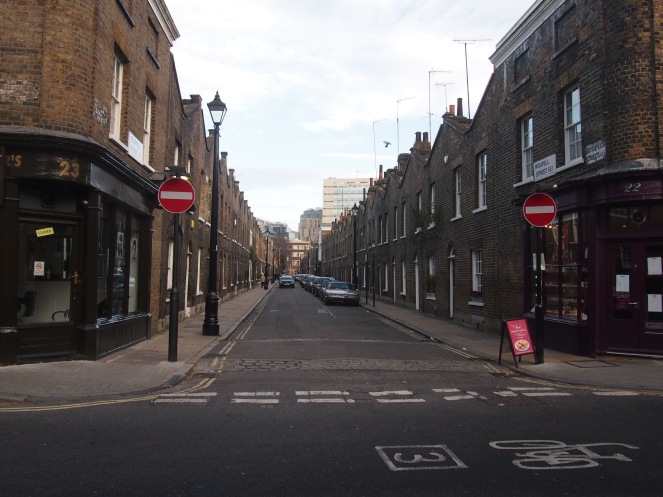
Described by Time Out as “an impossibly handsome street of nineteenth-century workers’ cottages”, Roupell Street was first developed in the 1820s. The land was owned by John Roupell, whose family lived in nearby Cross Street (now called Meymott Street). The Roupells were a wealthy family, whose money had been made in lead smelting and scrap metal. Clearly John Roupell saw an opportunity to add to his income by building properties on his land and renting them out to local people.
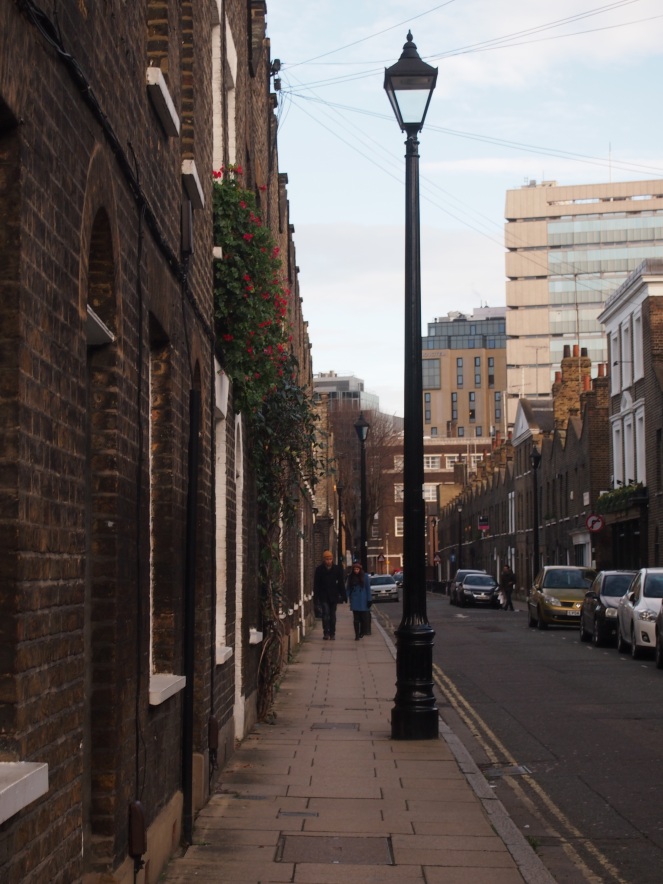
Before the development of Roupell Street, this area had been known as Lambeth Marsh. Sparsely populated, it was characterised by marshy areas and sandbanks, although the building of Blackfriars Bridge in 1769 kickstarted the building of houses and businesses from the late 18th Century onwards. Waterloo Bridge opened in 1817 and further facilitated the development of the area south of the river.
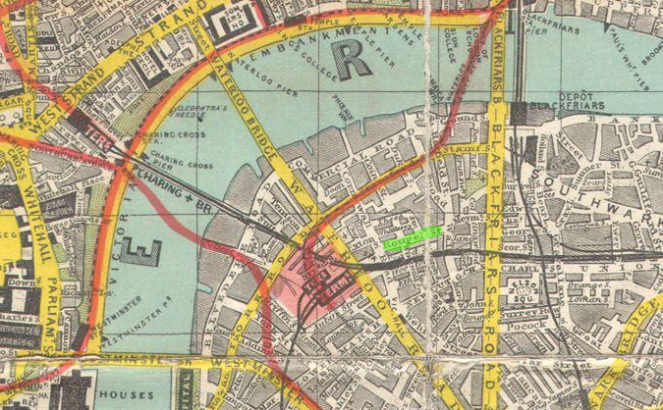
The survival of such a street surprised me, as this area of London was devastated first by the expansion of the railways, and later in the Blitz. The large-scale development of the railway terminus at Waterloo after it first opened in 1848 swept away entire streets, particularly when the huge station we see today was built at the beginning of the 20th Century. Lambeth Council describes Roupell Street as a “historic enclave in a district which has otherwise experienced large scale redevelopment.” Further north of Roupell Street is the post war South Bank development, and immediately to the south the railway rumbles past.
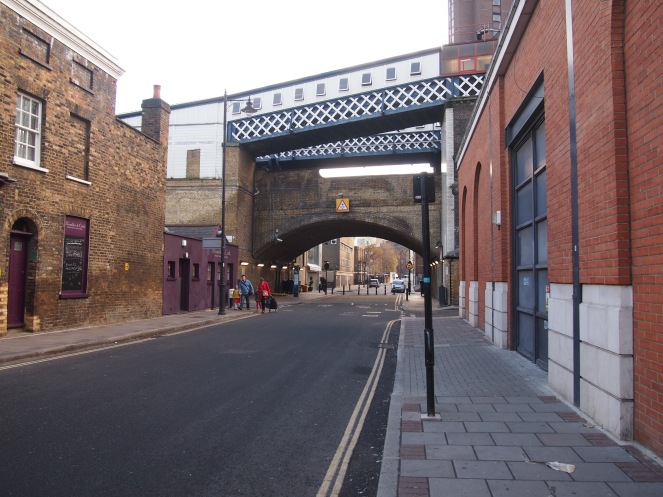
The houses built on Roupell Street were not high status dwellings of the sort that have been more likely to survive in London from this period. The area south of the Thames was one of growing industry, and the people working there needed somewhere to live. The houses of Roupell Street were homes for artisans and skilled workers – joiners, metal workers, stonemasons, blacksmiths and a host of other trades. The modest two-story terraced houses have no front gardens, which shows their low status at the time when they were built. The houses of Roupell Street were later joined by more new streets, also owned and developed by the Roupell family. Collectively, these streets are known as the Lambeth Estate.
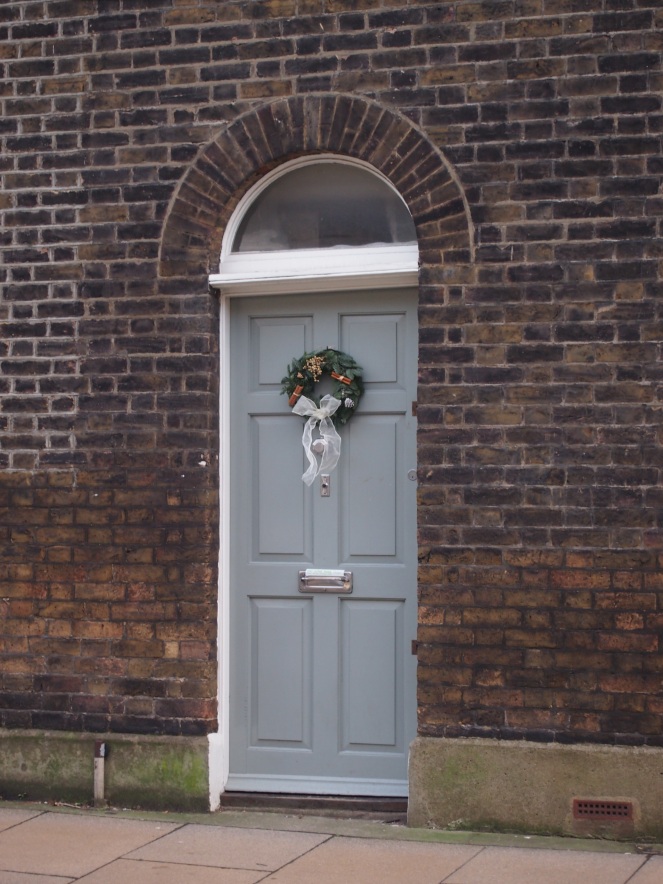
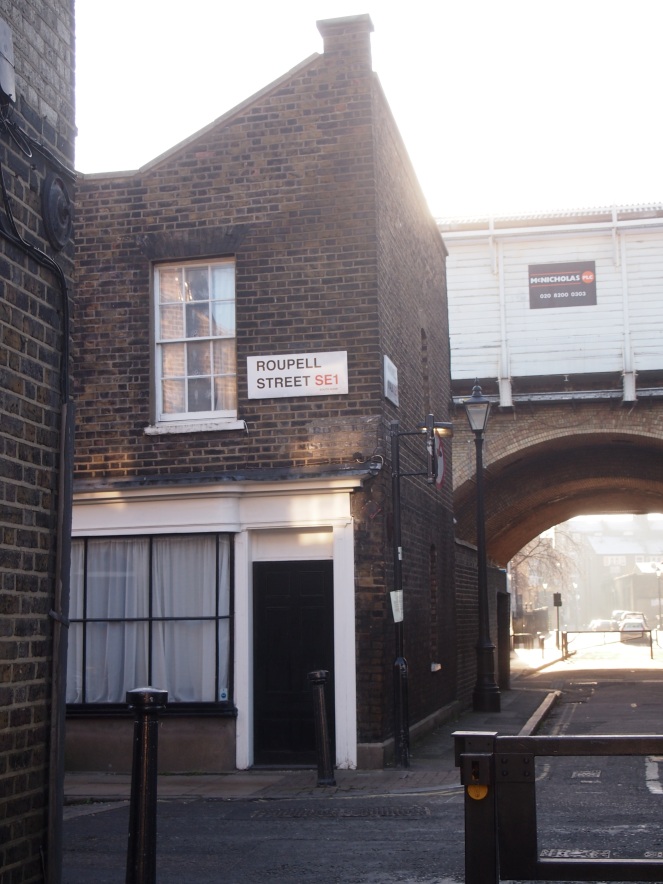
The other streets were named after members of the Roupell family – John Street, Catherine Street and Richard Street. However, as London grew and became more and more built up, it was found that a lot of streets were named after landowners and their families, and to avoid confusion the streets around Roupell Street were renamed in the late 19th Century. Catherine Street became Whittlesey Street East, Richard Street became Whittlesey Street West and John Street became Theed Street. The houses on Whittlesey Street and Theed Street include some larger, double-fronted terraces, such as the house pictured below.
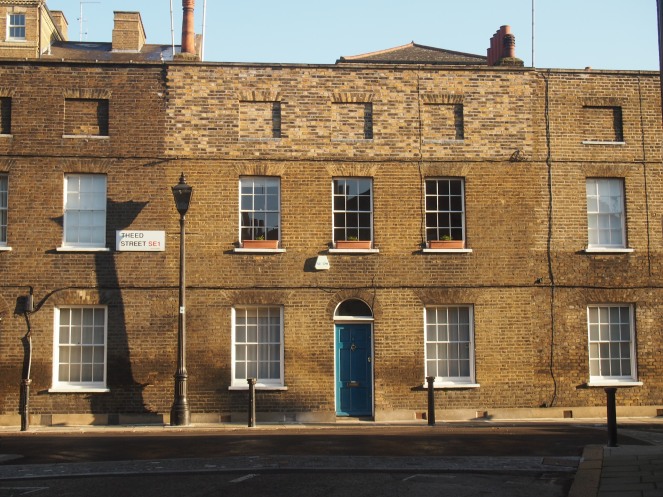
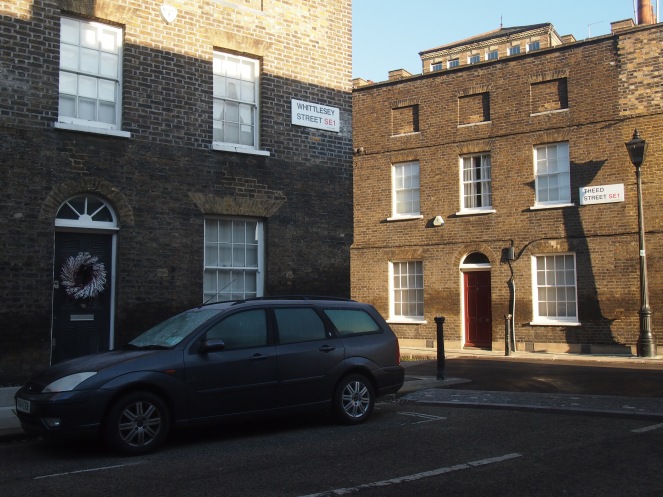
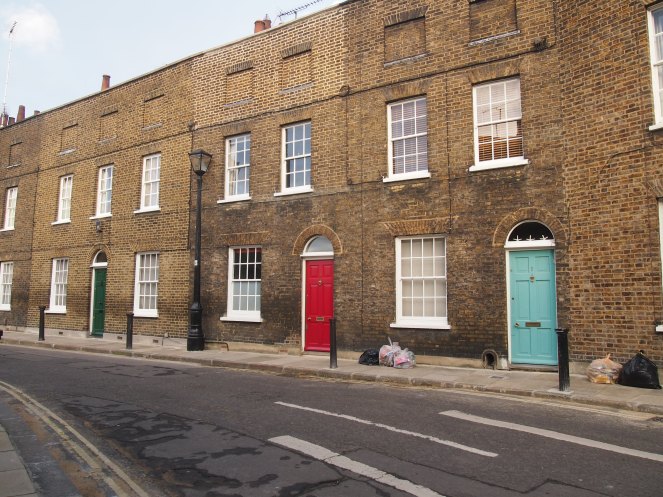
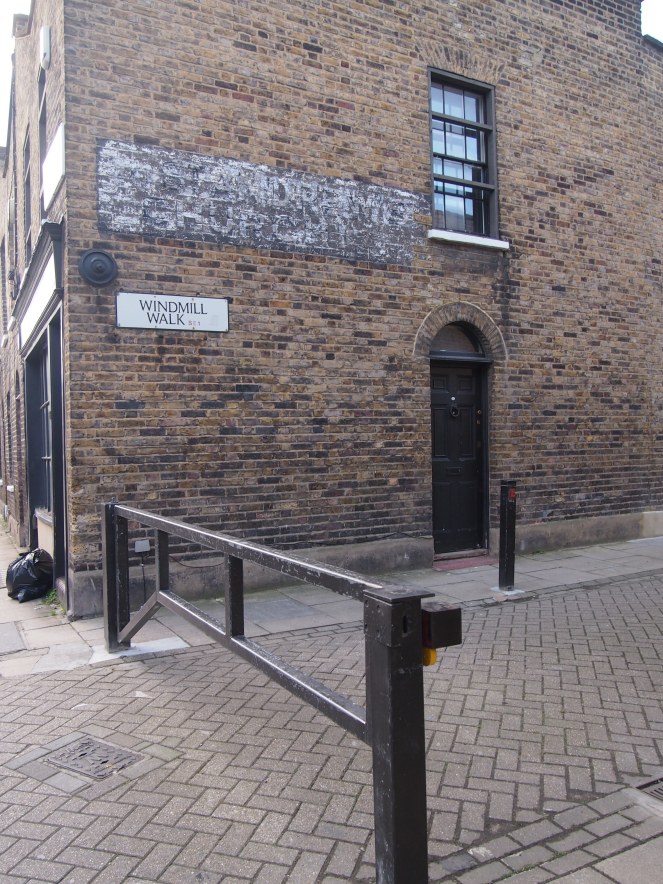
In the 1970s, the houses in Roupell Street and the surrounding area passed into private ownership, and the Lambeth Estate was designated a Conservation Area in 1976. Conservation Areas are legally defined as “areas of special architectural or historic interest, the character and appearance of which it is desirable to preserve and enhance.” Today, a large number of the buildings are listed, and along with the Lambeth Estate’s Conservation Area status this prevents the houses from being demolished or unsympathetically altered.

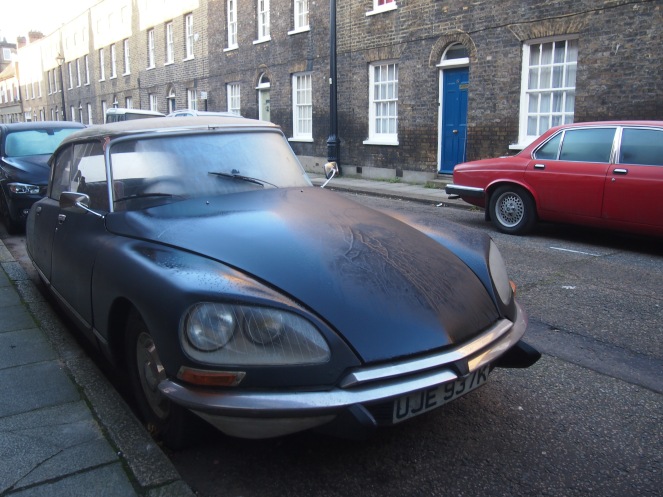
Lonely Planet’s guide to London describes Roupell Street as being “so uniform it looks like a film set” and unsurprisingly, the picturesque and historic Lambeth Estate has been used as a backdrop to a number of films and television programmes. Theed Street and Windmill Walk were used as locations in the 1988 Doctor Who serial Remembrance of the Daleks and in July 2014 scenes from an upcoming film about the Kray twins were filmed on Roupell Street.

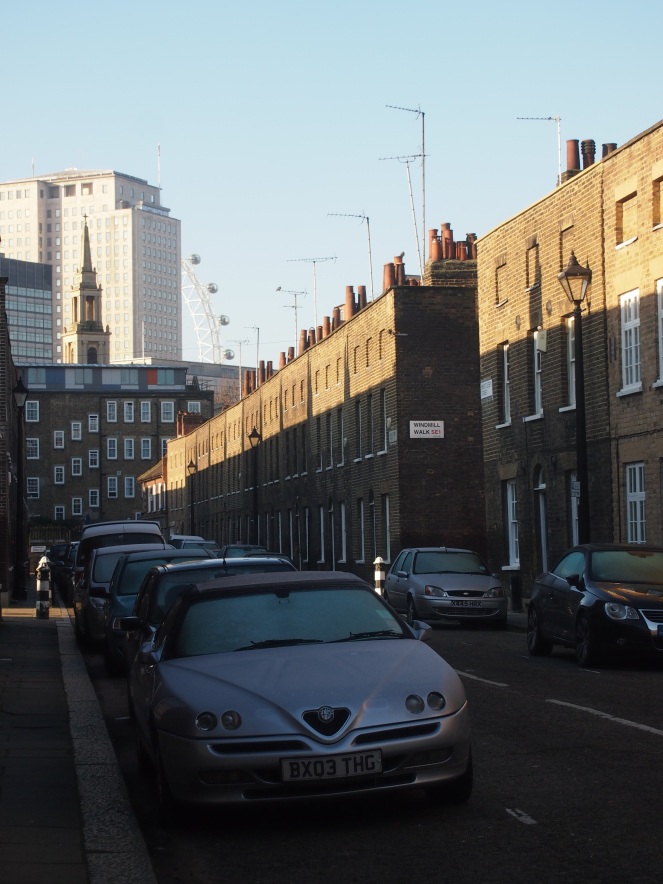
Today, as central London’s property market booms, the beautiful old houses of Roupell Street, Theed Street and Whittlesey Street are sought after and sell for very high prices. Fortunately, the streets’ Conservation Area status and the fact that so many of the houses are listed ought to ensure that these precious parts of London’s history are not lost to further development and continue to enthrall those who, like me, happen upon them completely by accident and feel as though they have stepped back into Victorian London.
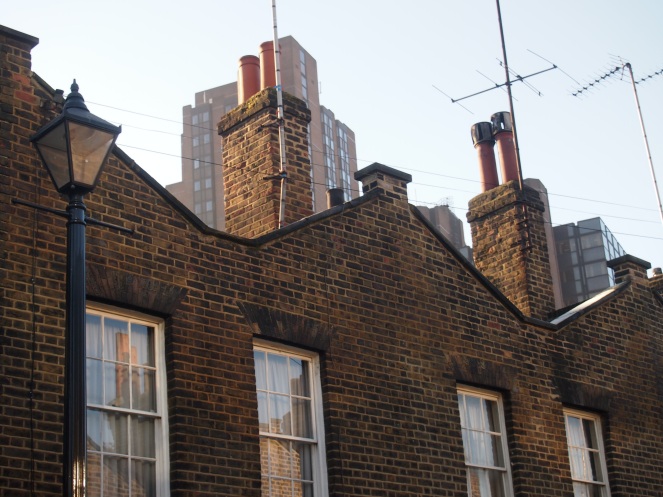
References and further reading
Local history of the Lambeth Estate area, Lambeth Estate Residents’ Association http://www.lera.org.uk/local-history.html
King’s Arms, 25 Roupell St SE1, Time Out http://www.timeout.com/london/bars-pubs/kings-arms
Roupell Street Conservation Area Statement, Lambeth Council, 2007 (PDF) http://lambeth.gov.uk/sites/default/files/pl-roupell-street-statement-2007.pdf
Scene set for Kray twins move in Waterloo’s Roupell Street, London SE1 Community Website, 6th July 2014 http://www.london-se1.co.uk/news/view/7696
Windmill Walk, Doctor Who Locations http://www.doctorwholocations.net/locations/windmillwalk


I love wandering around the back streets in London, you never know what you will find…..it really felt like stepping back in time with you photos, lovely interesting post 🙂
LikeLike
I’m glad you enjoyed the post! Coming across places like Roupell Street is the reason I enjoy wandering around and taking detours when I have the time – you never know what you might find.
LikeLiked by 1 person
What a fantastic street, there is one a little like it in Deptford, Albury Street, although it isn’t quite as uniform and is a little older. I like the church ghost sign.
LikeLike
I’ve never been to Albury Street, but having looked it up I can see the similarities with Roupell Street, despite the difference in age. Albury Street also reminds me of some of the streets in Spitalfields that have escaped modern redevelopment.
LikeLike
There may have been some, er, memorable parties in and around Roupell Street back in the Seventies. Good to see the blight of London’s ever more unattractive redevelopment hasn’t rolled over it (and won’t, thanks be feck to the preservationists!)
LikeLike
So much of London’s heritage has been lost to unsympathetic developers – I’m glad that Roupell Street will be sticking around.
LikeLike
When I was at school in London in the mid 1960s, streets like this seemed to be everywhere.
LikeLike
So much of old London seems to have been lost after the Blitz – I’m glad that Roupell Street has been protected from development.
LikeLike
The residents of Roupell St very much enjoyed your article (i think 3 different residents sent it to me).
Ironically since the article, the school on Roupell Street have proposed a “moment of animation in an otherwise uniform street) – lets hope this doesn’t get permission as you correctly identify the streets beauty is in the fact developers haven’t ruined it!
LikeLike
Thank you, I’m really glad that people living on Roupell St have enjoyed the post.
Let’s hope that as a conservation area, it’s more difficult for unsympathetic building schemes to get approved on the street. I love how distinctive and atmospheric Roupell St is in its unspoilt state.
LikeLike
I lived at 1 Whittlesey St during the blitz along with two brothers. My grand parents also lived in the house before we did, and raised 7 children there. My father was the manager of the hairdressers on the corner of Roupell st, and worked there from 1945 until 1974. Many happy memories of the area.
LikeLike
Above the photo showing “Windmill Walk” is a fading sign which reads St Andrews Church which was in Theed St. I used to read the lesson on Sunday prayers, the priest was a Rev Burfield who was blind.
LikeLike
i used to visit as a child. My nan’s best friend Mary lived there. Her brother Tommy lived a few doors down. I used to be scared using the outside loo.
LikeLike
Reblogged this on texthistory and commented:
One street that should escape London developers
LikeLike
My 2x great grandfather George Winch and his family lived in Roupell Street around 1843. they later moved to 14 Richard Street about 1851 and in 1861 to No 15. His occupation was Butcher.
He died in 1864 and his wife Sarah died in 1882, still at No 15 Richard Street.
I wonder if the house numbers are still the same as at that time?
LikeLike
I was born in Peabody Buildings many years ago and Roupell Street was outside the buildings.We had no electricity or hot water but thad a fantastic childhood.I took Roupell Street for granted as I walked it every day to school then to Waterloo Station to work.It is a disgrace the prices these houses fetch now.Whole families lived in them for many years then their children then their children and so on.Now it has become the new Chelsea and nearly everyone of the original people live outside London.It was meant for the ordinary working people not thr rich.disgusted.mags
LikeLike
My family lived in number 1 for 4 generations until the mid 80sI still love going back and having a look when I go up town. We also had family in the peabody buildings and friends in the prefabs. Weve got fab cine film footage from the 60s. But OMG the price of these places now!
LikeLike
My grandmother was born in Roupell Street, and at the time the family who were to become her in-laws were living in Theed Street, (although they soon moved to Holborn, where my grandfather was born). She lived there till she married in 1912. I’m very proud that Roupell Street appears in the map of the Sound of Bow Bells.
LikeLike
My maternal grandfather, Arthur Carter, grew up on Roupell Street (number 53?); I’m not sure if that’s where he was born on January 30, 1888. He was the oldest of 6 children of Arthur Edmond Carter and Emily Stearn. In 1908 he emigrated to Canada and homesteaded on a farm in Saskatchewan. I regret so much that I never asked him about his childhood growing up surrounded by so many historic streets and structures..
Judy Hawes
LikeLike
Judy, it’s a good chance your grandfather was born their as the BMD register records only one Arthur George Carter born January 1888 in Lambeth.
LikeLike
thank you for that information, Ronald. I hadn’t even thought about trying to access RMD register records. I’m not very familiar with what resources exist or how to use them.
Judy
LikeLike
Judy, freebmd.org.uk is the site to visit. It’s records are from 1837 to 1992.
LikeLike
Hello , I was a twin and was born at 21 Roupell St in 1962. There was my brother and I and an older sister. My mum and dad had a paper pitch in Stamford At. I went to St Andrews School. We moved out in 1976. My dad could have bought the property for £7000. He decided to buy out of London at the time. If he could see the price they are now he would be kicking himself😂
LikeLike
I’m nearly 8 years late. Great blog and amazing photos! 🙂
LikeLiked by 1 person